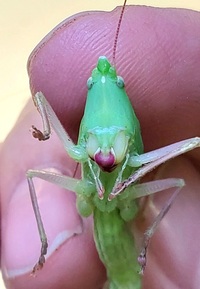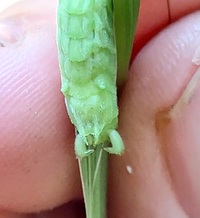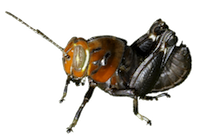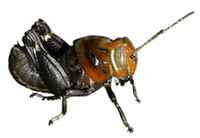| |
Family (Alpha): | |
| View | Tettigoniidae Members:
| NC Records |
|---|
Neoconocephalus palustris (Blatchley, 1893) - Marsh Conehead |
 |  |
|
|
|
|
|
Image Gallery for Neoconocephalus palustris - Marsh Conehead
|
 | Recorded by: Mark Basinger
Richmond Co.
Comment: |  | Recorded by: Mark Basinger
Richmond Co.
Comment: |
 | Recorded by: Mark Basinger
Richmond Co.
Comment: |

 »
»


 »
»
